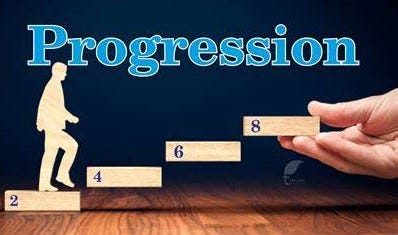Exploring the Infinite Nature of Primes in Arithmetic Progressions
Written on
Chapter 1: The Legacy of Dirichlet
Lejeune Dirichlet, a prominent German mathematician, demonstrated that there are infinitely many primes in an arithmetic progression.

Dirichlet (1805–1859)
Born in 1805, Dirichlet developed a profound passion for mathematics at a young age, often spending his allowances on math textbooks. After completing his education, he chose to further his studies in Paris, where the quality of mathematical education exceeded that in Germany at the time. He learned from some of the era's greatest mathematicians, such as Fourier, Laplace, and Poisson.
Dirichlet’s initial work revolved around Fermat's Last Theorem, which posits:
For n > 2, there are no non-zero integers x, y, z such that
x^n + y^n = z^n.
While mathematicians like Euler and Fermat had addressed the cases for n = 3 and n = 4, Dirichlet focused on proving the case for n = 5. He established that in this scenario, at least one of the integers x, y, or z must be even, and another must be divisible by 5. He explored two possibilities: one where the number divisible by 5 is even, and another where the even number and the one divisible by 5 are distinct. Dirichlet successfully proved the first scenario and presented his findings to the Paris Academy in 1825, also contributing to the n = 14 case.
In 1828, Dirichlet secured a teaching position at a Berlin college, allowing him to also instruct at the University of Berlin. He held the title of Professor of Mathematics there until 1855. After the passing of the renowned mathematician Gauss in 1855, Dirichlet assumed his role in Göttingen, where he remained until his death in 1859.
Dirichlet was instrumental in defining mathematical functions and, in 1837, he proved the existence of infinitely many primes within an arithmetic progression, establishing himself as a pioneer in ‘Analytic Number Theory.’ This field employs mathematical analysis to address and resolve problems related to numbers.
Section 1.1: Understanding Arithmetic Progression
To comprehend Dirichlet’s theorem, we first need to understand what an arithmetic progression is. For instance, consider the sequence 1, 8, 15, 22, 29,... where each term increases by 7. This sequence exemplifies an arithmetic progression, which can be expressed generally as:
a, a + b, a + 2b, a + 3b, ...
where 'a' represents the first term and 'b' is the common difference.
Dirichlet’s Theorem:
Let 'a' and 'b' be relatively prime positive integers. Then the sequence
a, a + b, a + 2b, a + 3b, ...
contains infinitely many prime numbers.
The proof of this theorem is intricate and demands a solid understanding of calculus and analytic number theory. I plan to delve into the proof in a subsequent publication.
What does this signify?
For instance, if we set a = 2 and b = 3, we derive an infinite sequence of primes:
2, 5, 11, 17, ...
Notice that Dirichlet’s theorem does not imply that this sequence consists solely of primes; numbers like 8 and 14 are clearly not prime.
We can also demonstrate that there are infinitely many primes that end with 999 by selecting a = 999 and b = 1000, ensuring that their greatest common divisor is 1.
If you have any feedback or thoughts, feel free to share them below—I read every comment!
While you’re here, consider exploring some of my other articles:
Unsolved Problems of Primes!
Four intriguing challenges in number theory that are straightforward to articulate but complex to solve.
The Queen’s Gambit Declined!!
Reflecting on the famous Netflix series, The Queen’s Gambit, which garnered 11 Emmy awards, including Best Limited Series.
Proof that there are Infinitely Many Primes!
Euclid’s proof remains one of the most elegant demonstrations in mathematics.
Chess Champion Sues Netflix Over “Sexist” Line in Queen’s Gambit Show
Nona Gaprindashvili, the first female grandmaster, is suing Netflix for five million dollars.
Thank you for reading!
Chapter 2: Videos on Primes in Arithmetic Progressions
Primes in Arithmetic Progressions and Sieves
This video explores the connection between primes in arithmetic sequences and sieve methods, providing an insightful overview of the topic.
Primes in Arithmetic Progressions: The Riemann Hypothesis - and Beyond!
In this video, James Maynard discusses the implications of the Riemann Hypothesis concerning primes in arithmetic progressions and its far-reaching significance.